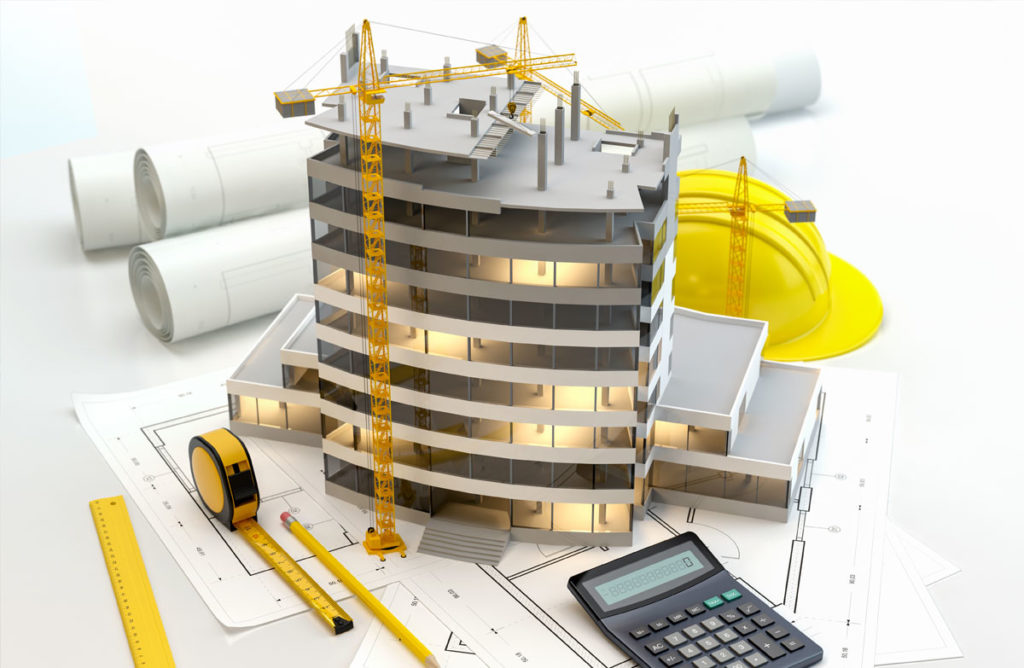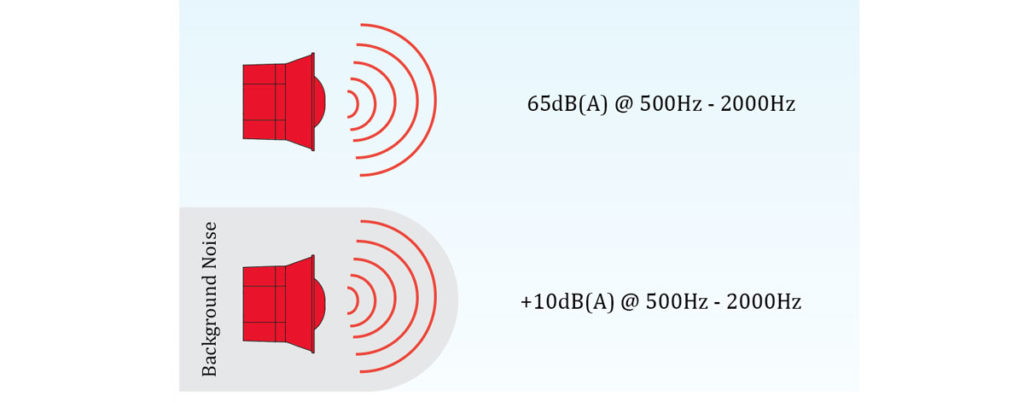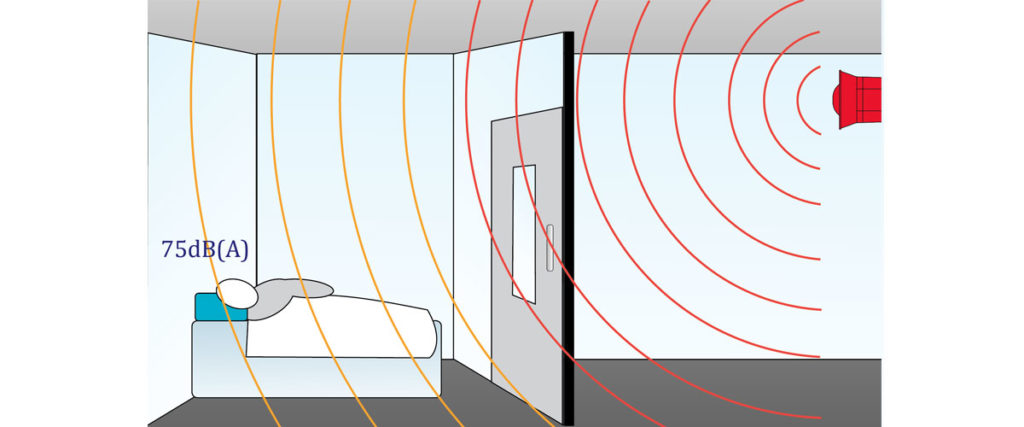In the previous article, we talked about the revision of the detection area of beam detectors with the EN 54-14 2018 version. In addition, we mentioned about the distance to the ventilation vents and how much the air flow should be at the point where the detector is located. Finally, we talked about the change in the mounting height of the manual call points.
Changes in the Updated EN 54-14 Standard -4

Sounders play a very important role in fire detection systems. It is critical to inform the people in the building of the fire detected by detectors or manual call points to prevent loss of life. In order for the fire to be announced to the people in the building, the sirens must give an alarm above a certain sound level. Otherwise, people will not be able to hear the sounder and evacuate the building. This minimum sound level is specified as 65 dB (A) in the EN 54-14 Standard. There is no change in this regard in the 2018 version of the standard.

However, in the current EN 54-14 Standard, some revisions have been made regarding the sound levels of the sounders. According to the old standard, if there is a sound that continues for more than 30 seconds in the building where the fire occurred, the sounders had to give a warning with a sound 5dB (A) higher than the current sound in the environment. In the new version of EN 54-14 Standard, this value has been updated as 10dB (A). In addition, according to the old version of the standard, the fire alarm sounder can give a maximum sound output of 120 dB (A) at any point where people can be found, while this value has been revised as 118 dB (A) in the new version.

By the way, speaking of fire alarm sounders, it is worth noting that 75 dB (A) is needed instead of 65 to warn sleepers in case of fire. This value is also valid in the current version of the standard. As can be seen, revisions have been made in many issues in the 2018 version of the EN 54-14 standard. While designing fire detection systems, the current version of the EN 54-14 standard should be based on.
